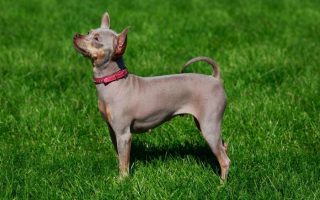Switzerland is a place of origin for some of the most resilient and hard-working dogs.
Bred for work in rough mountain terrain and cold climate, these breeds are well equipped to handle the toughest job assignments and withstand the harsh weather conditions.
One of the finest examples of Swiss breeds is the Bernese Mountain Dog. It’s a strong breed with a sweet personality and undying loyalty to its owners.
However, due to their higher maintenance requirements and strong independence tendencies they can sometimes be a handful, especially for less experienced owners.
That’s why they’re occasionally crossbred with other breeds to create more easy-going and low-maintenance family dogs.
The most famous of these designer breeds are Bernedoodle, created by mixing Bernese Mountain Dog and Poodle.
Below, I’ll compare Bernedoodle vs Bernese Mountain Dog to see how much difference there is between the two and what traits they still have in common.
So, let’s dive in!
| Attributes | Bernedoodle | Bernese Mountain Dog |
| Good For First Time Owners | Yes | Yes |
| Good Guard Dog | No | Yes |
| Apartment Friendly | Yes | No |
| Good Family Dog | Yes | Yes |
| Shedding | Low | High |
| Barking And Howling | Moderate | Moderate |
| Height | 23-29 inches (58-74 cm) | 23-28 inches (58-70 cm) |
| Average Life Expectancy | 12-18 Years | 7-8 Years |
[wpsm_toplist]
Bernedoodle – Dog Breed Information
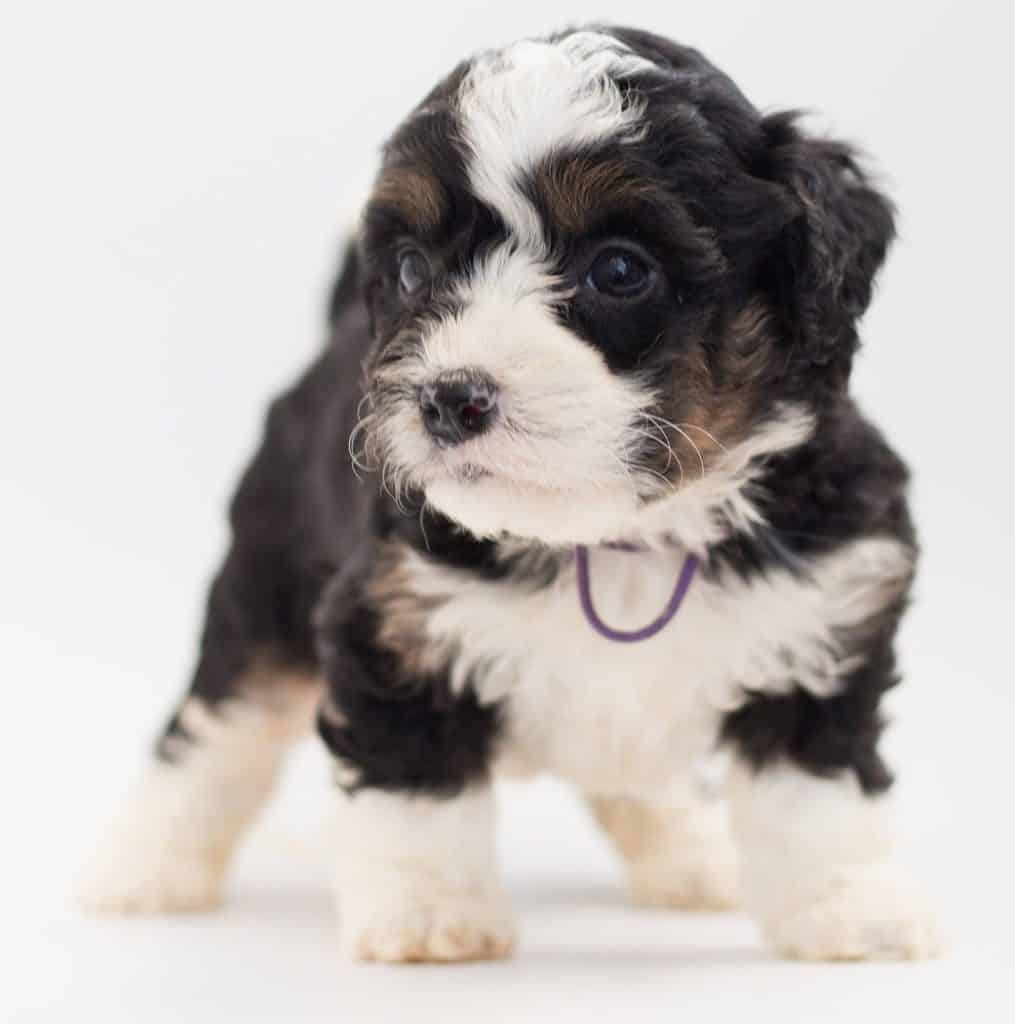
Also known as Bernese Mountain Poo, Bernedoodle is a 50/50 cross between Bernese Mountain Dog and Poodle.
Ideally, it should combine the best traits from each of its parent breeds to create a loyal, energetic, healthy, and low-maintenance family dog.
Bernedoodle have been around for quite some time but the first official cross between breeds dates back to 2003 and is attributed to Canadian breeder Sherry Rupke from SwissRidge Kennels.
Appearance
While 50/50 cross is the basic mix, breeders often continue to combine different generations of Bernedoodles.
This results in varying appearances and sizes.
In general, all Bernedoodles feature powerful, heavy-boned, and compact bodies.
The coat of Bernedoodle also can vary. It can be more curly like the Poodle or more straight, similar to Bernese.
As a rule, dogs whose coat is more similar to Poodle’s will shed less and those dogs are commonly hypoallergenic.
The color also varies greatly. They can feature tricolor patterns like Bernese parents, but pure black or black and white mixes are also common.
Bernedoodles have a typical triangle-shaped muzzle, button eyes, and long, floppy ears. The tail is long, bushy, and held high.
Bernedoodles grow up to 23-29 inches (58-74 cm) and weigh around 66-86 pounds (30-39 kg).
Temperament
Bernedoodles combine the personality traits of both parent breeds.
Although the temperament of a certain dog can vary, they are loving, gentle, and devoted to their family.
They do require a lot of attention and love to spend time with their humans.
Bernedoodles are very intelligent, but also have a goofy and playful side to them and enjoy being around children.
Around strangers, they can be rather shy, but that can be solved with proper and early socialization.
They’re very energetic and are a great choice for more active families. Bernedoodles make excellent companions for hiking, running, or bike rides.
However, this also means that you’ll have to set aside a significant chunk of your time to provide them with enough exercise.
This breed responds well to training but has kept some stubbornness from their Bernese parent, so they require firm leadership.
Bernese Mountain Dog – Dog Breed Information
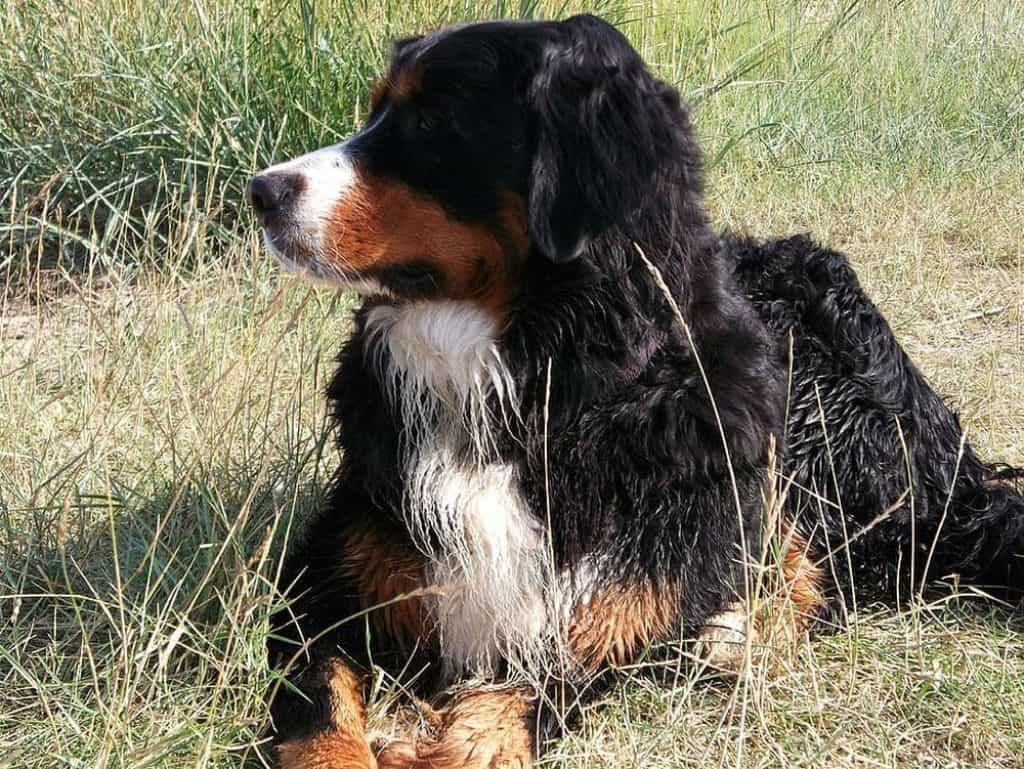
Bernese Mountain Dogs were developed in tough conditions in the Swiss Alps where they provided invaluable help and companionship to local farmers.
While their primary job was herding, due to their exquisite strength, they were often used as draft dogs and to pull carts.
Appearance
Berners are typical mountains dogs – big, strong, and muscular. They are a bit longer than tall and able to move around with ease and grace.
They have a dense, silky double coat which provides protection in a cold climate. The coat is moderately long and can be wavy or straight.
They are tri-colored with black as the base color. The markings are rust and white and commonly symmetrically positioned on their body.
Bernese Mountain Dogs feature big and strong heads with straight muzzles.
Eyes are dark with a soulful gaze while the ears are medium-sized and flopped downwards.
Males are about 24-28 inches (61-71 cm) high and can weigh 77-122 pounds (35-55 kg).
Female Berners grow up to 22-26 inches (58-66) and weigh 66-111 pounds (30-50 kg).
Temperament
Even though their powerful appearance may lead you to think otherwise, Bernese Mountain Dogs are a very kind and friendly breed.
They’re very devoted to their family and appreciate every moment they get to spend with them.
While they are great with kids and very playful, due to their size there should be some adult supervision.
They get along well with other animals and are friendly towards strangers.
Berners are not the least bit aggressive, but as they are very alert and protective, they can serve as watchdogs.
They are more than happy to live indoors and be close to the family but will need a fair amount of time outdoors and regular activity.
Sometimes, they can be a bit stubborn, but love to learn new things and can be easily trained.
They don’t respond well to harsh treatment, so positive reinforcement is the best way to get the most out of training.
Bernedoodle vs Bernese Mountain Dog – What’s the Difference?
| Bernedoodle | Bernese Mountain Dog |
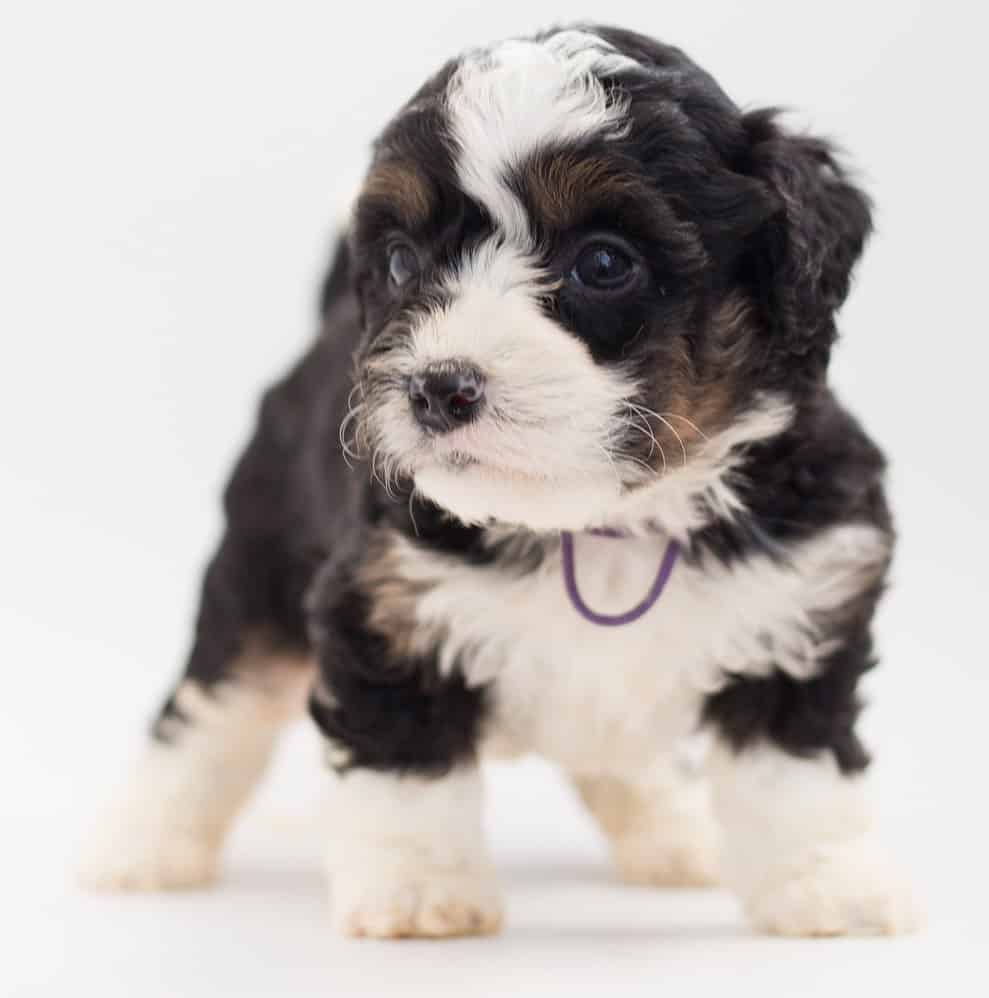 | 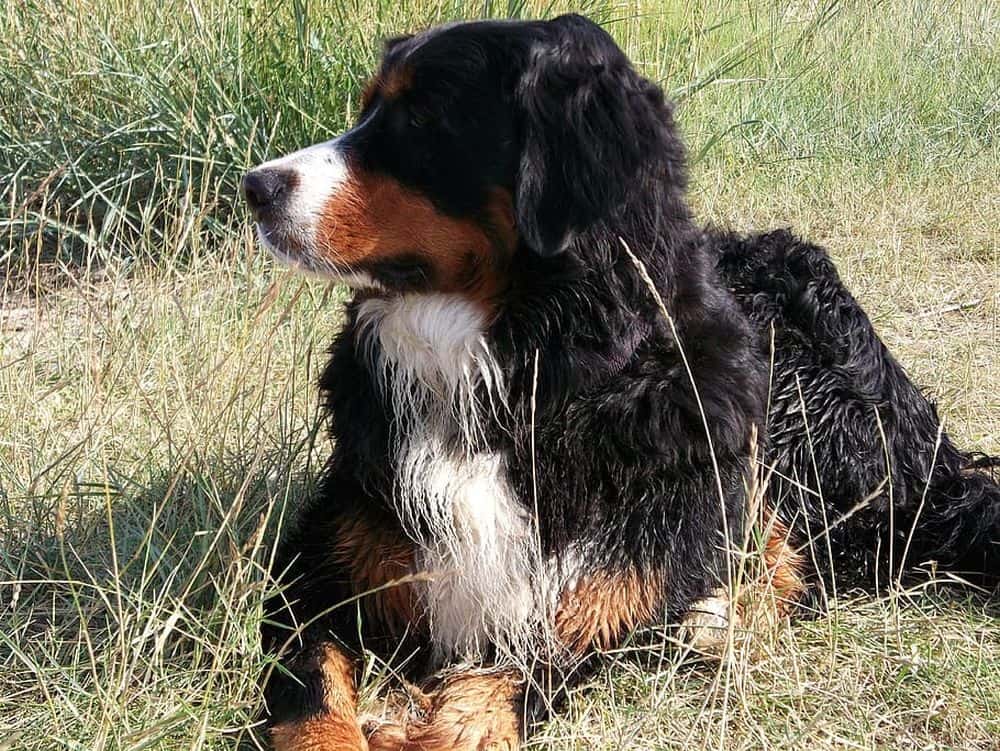 |
As Bernedoodles are 50% Bernese Mountain Dogs, there are a lot of similarities between the two breeds.
However, they also have certain traits coming from the Poodle side.
For starters, Bernedoodles are more adaptable and suitable for apartment living.
In addition, they shed much less and are hypoallergenic.
Most personality differences come from the fact that Berners were bred for work, while Bernedoodles were created to be family dogs.
While both breeds are gentle and sweet, Bernedoodles are more easy-going and less difficult to handle, especially for first-time owners.
On the other hand, they are more attached to their humans and will need more attention.
One of the main reasons for the creation of this mixed breed is that Berners had quite a few health concerns and a relatively short life span (6-8 years).
Bernedoodles are much healthier and live longer.
Conclusion
There’s no doubt that each of these breeds will make wonderful family pets.
However, some of their traits make them more suitable for certain owners and their needs and lifestyle.
If you’re looking for a loyal and active companion that can also work and play hard, then the Bernese Mountain Dog is a great choice.
On the other hand, if you want a strictly family dog, you should go with Bernedoodle.
Berners can be a handful due to their independence and stubbornness, while Bernedoodles are much easier to handle and more adaptable to different living arrangements.
While some people may be suspicious of designer breeds, they are often a great way to get the dog with the exact traits you want.





